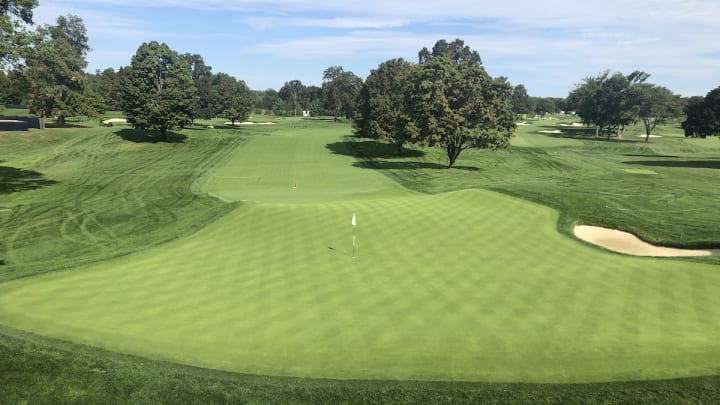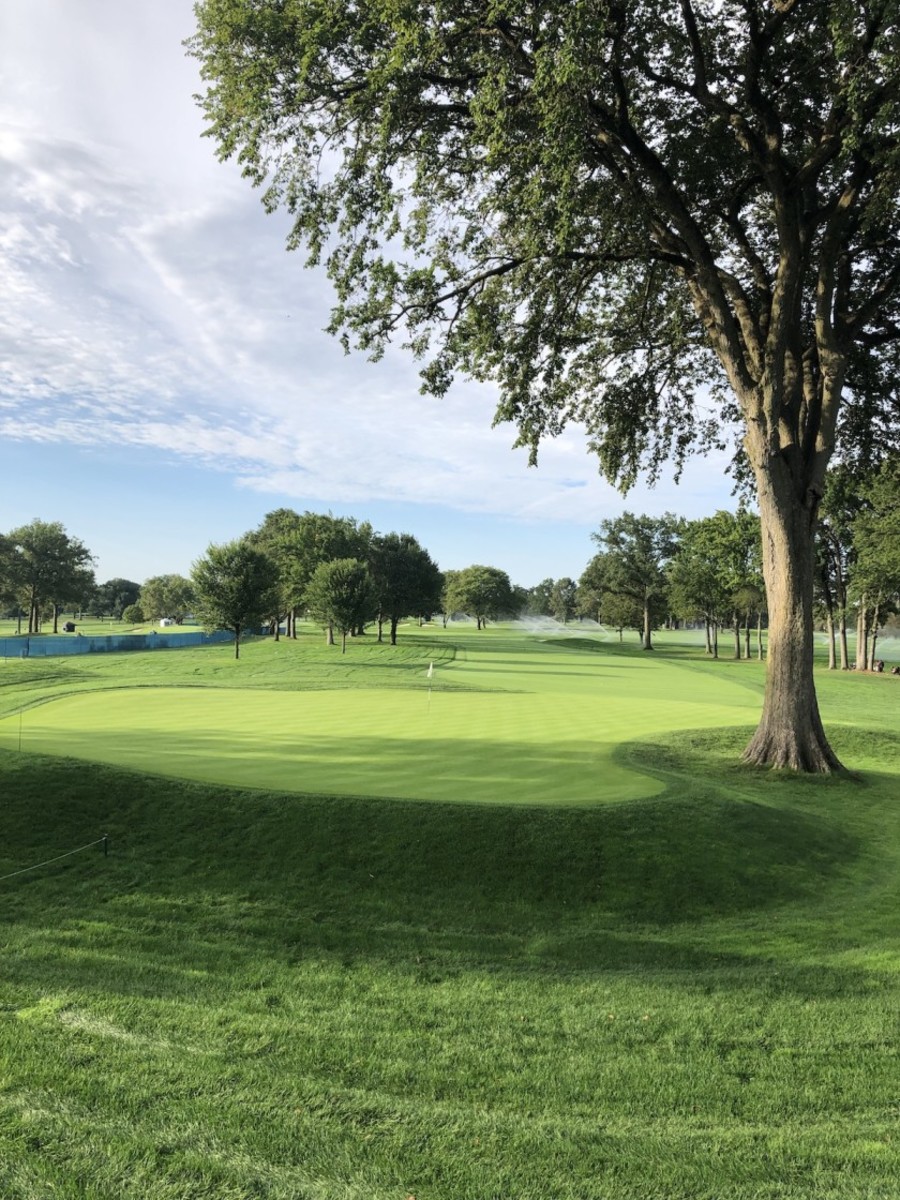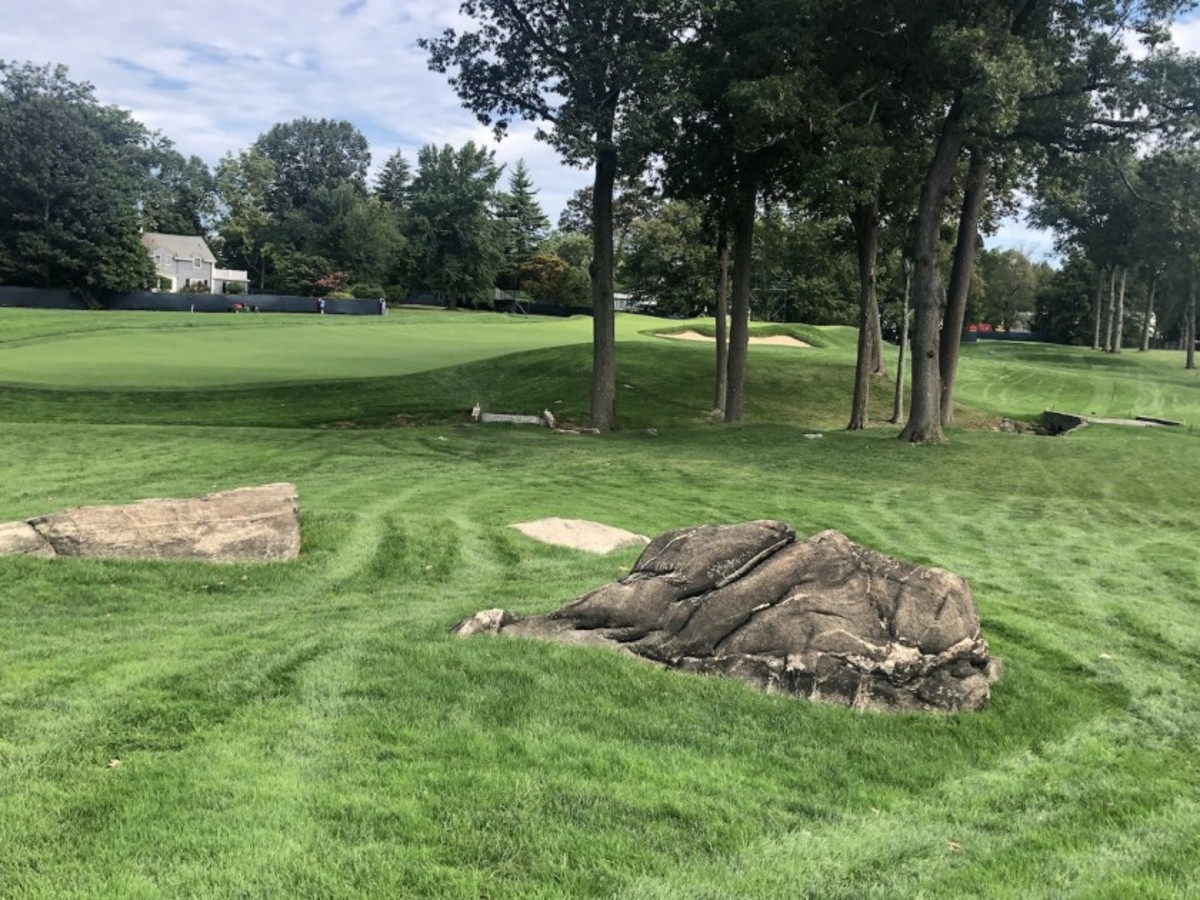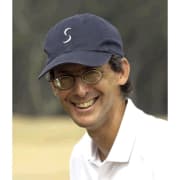2020 U.S. Open: A look at the course and how Winged Foot stays step ahead

MAMARONECK, N.Y. – The national championship returns this week to storied Winged Foot Golf Club, 25 miles northeast of midtown Manhattan. With spectators banned from the grounds at the 120th U.S. Open and no bleachers or concession tents onsite, viewers from home will get a rare, unimpeded view of one of the world’s most demanding golf courses.
At 7,477 yards, the par-70 West Course is notorious for difficulty, most recently for the 2006 U.S. Open. That’s when Geoff Ogilvy won at 5 over after Phil Mickelson, Colin Montgomerie and Jim Furyk all lost by a shot after making bogey or worse on the final hole.
The 1923 design by A.W. Tillinghast has now been treated to a full restoration by Gil Hanse and sports narrowed landing areas, denser rough, and bigger greens than in 2006 (by 25 percent, to an average of 6,667 square feet). These greens are firmer and harder to hold than ever, while offering more diverse hole locations that amp up the risk/reward equation.
As a round unfolds, here are some key holes that reveal crucial demands:

No. 2, par 4, 484 yards: The West Course has more elevation change than might appear. The opening three holes climb 48 feet, half of it on this lengthened par 4, where the landing area off the tee has been narrowed to 22 yards across. Players have to hit a controlled left-to-right tee shot that avoids a bunker flanking left, on the outside of the dogleg. Overcook a drive slightly and dense ryegrass rough 3½-4 inches thick awaits, plus overhanging trees. Hitting the green and holding the surface from this rough will be terribly difficult. The hole derives its name, “Elm,” from a towering hardwood of that species that drapes the left side of the green. The putting surface has been expanded to include a false front. It also has been deepened. At 41 yards long, the green offers a new array of hole locations. Here’s a clear example of an enlarged green making play more difficult by allowing placement of hole locations closer to outlying falloffs. This will be the hardest hole on the course.
No. 6, par 4, 321 yards: This is a seductive temptation, with an “L”-shaped green (thus the hole’s name of “El”) within reach from the tee. The thickest rough on the course, upwards of 5 inches, awaits a wayward drive or layup. There’s a lot of visual awkwardness off the tee, given the way a dead-straight line of fairway down the right side runs right into a front-right greenside bunker. The line forces a player’s eye and his alignment to the left, creating the need to shape some sort of tee shot to the course’s narrowest fairway (19 yards), with a punitive bunker on the left, 240-260 yards away. A creek 12 yards left of the green awaits an overcooked tee shot. The green, only 32 yards deep, runs slightly away from the approach and makes it hard to stop an approach flown over that front bunker. This will be a fun hole to watch, with tee shots anywhere from a 7-iron to a driver and scores from 2 to 6 an equal likelihood.

No. 15, par 4, 426 yards: “Pyramids” is part of a grinding finish of five consecutive par 4s. The 15th hole has a fairway 20 feet below the tee and kicking hard from right to left, with out-of-bounds very close on the left. With the fairway giving way to a creek 315 yards away, it’s usually a layup off the tee – unless the player thinks he can carry the ball 335 yards to the far fairway. Modesty usually prevails. A fairway wood or long iron that lands just beyond a deep fairway that plays tight to the right, 245 yards to carry. Anything bailed out to the right will find dense rough, exposed rock (the same material used to build the clubhouse) and a copse of annoying trees. The green here nearly got doubled in size during the restoration and now involves a wicked false front and deep shoulder back right, with all sorts of nervy possibilities for hole locations.
No. 18, par 4, 469 yards: Now 18 yards longer than when it provided the stage for final-round drama in 2006, “Revelations” plays out of a very confining, tree-lined chute – the first of its kind on the golf course. Driver off the tee brings a big fairway bunker into play on the outside right of the dogleg, 315 yards away. The reward for keeping a drive in play is getting it past the corner, beyond the point where towering trees on the left impede a clear second shot in. Lay back a bit for safety off the tee and the golfer leaves a second shot of 180 yards or more, plus risk of getting obstructed by that left side. The green here has been a stage for major-championship drama since Bobby Jones sank a delicate, downhill 12-foot putt in the 1929 U.S. Open to get into a playoff (that he won) against Al Espinosa. It also was the scene of Davis Love III’s “rainbow” upon winning the 1997 PGA Championship. The expanded green now rides up on heavily contoured shoulders and looks simultaneously voluptuous and threatening. It’s a fitting scene for the last shots of a round and of another U.S. Open.

Sign up to receive the Morning Read newsletter, along with Where To Golf Next and The Equipment Insider.
